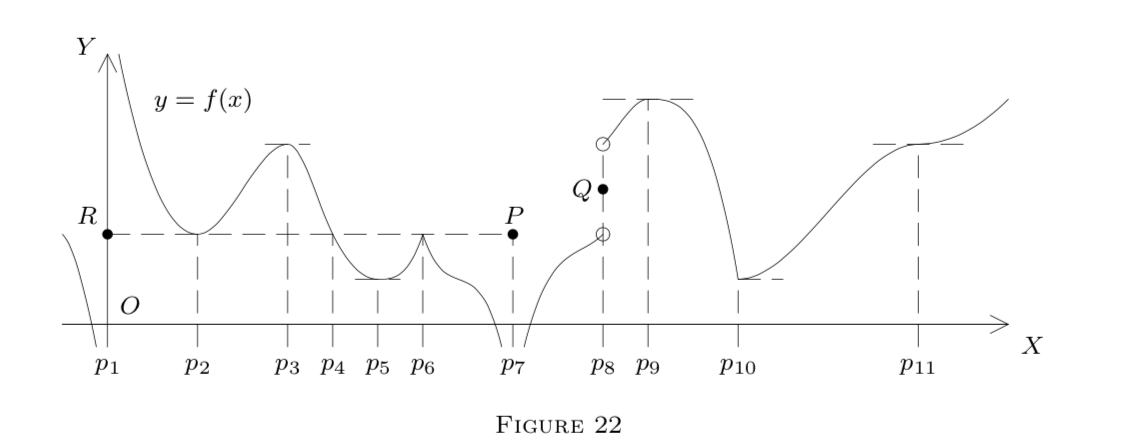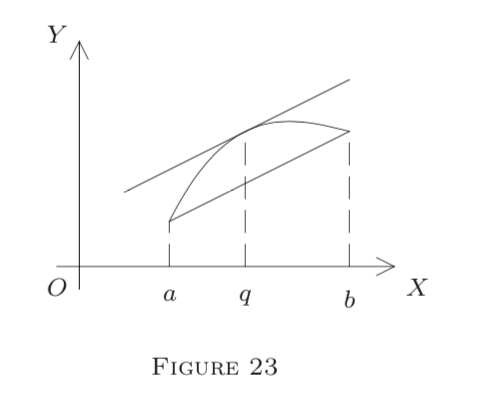5.2: Derivatives of Extended-Real Functions
( \newcommand{\kernel}{\mathrm{null}\,}\)
For a while (in §§2 and 3), we limit ourselves to extended-real functions. Below,
If
implies
for all
Similarly, if
- Proof
-
If
Hence we must also have
It follows that
(This implies
as claimed; similarly in case
If
For, by Lemma 1,
Note 1. Thus
Figure 22 illustrates these facts at the points
Geometrically,
Let
- Proof
-
By Theorem 2 of Chapter 4, §8,

Thus
Now let
Thus
In the case
Caution: The function
See Note 1.
If :
For, if
Figure 22 illustrates this on the intervals
Note 2. Theorem 1 and Corollary 2 hold even if
Let the functions
- Proof
-
Let
Thus by Corollary 2,
If
- Proof
-
Take
Note 3. Geometrically,
is the slope of the secant through

Let
(i)
(ii)
(iii)
- Proof
-
Let
Thus
The rest is left to the reader.
Let
(If
- Proof
-
By Theorem 3 of Chapter 4, §9,
Now if
and obtain
Now if
where we use the convention
(A) Let
Let
Thus
Now let
and the continuity of the log and power functions, we obtain
The same formula results also if
(B) The inverse of the log
By Theorem 3, we have
Thus
Symbolically,
In particular, if
(C) The power function
By the chain rule (§1, Theorem 3), we obtain
Thus we have the symbolic formula
If
- Proof
-
Let


